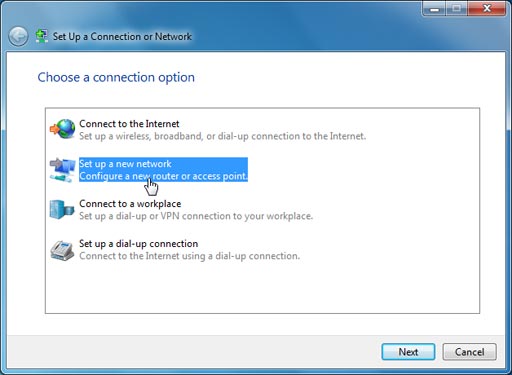Computer Basics
Connecting to the Internet
Setting up a home network
 Setting up a network
Setting up a networkBefore you set up your home network, you'll need to have a working Internet connection. The exact process of creating a network will vary depending on the type of computer you have, as well as what type of Internet service you have. You should use the instructions provided by your ISP (or the ones included with your router) when setting up your network. The following steps will give you an idea of what to expect:
- If you have a separate router, connect it to the modem, and make sure it has power through the power adapter. If you have a combined router/modem, you won't have to do this.
- Connect all nonwireless devices to your router using Ethernet cables. You may also need to connect your computer to the router until setup is complete, even if your computer has a wireless card.
- From your computer, you will need to create the SSID and password (or passphrase) for your router. You now have a wireless network that you can begin connecting wireless devices to.
- On each wireless device, you will need to go to your network settings and select the name (SSID) of the network you just created. You will then be prompted to type in your password.
At this point, your home network setup is complete. If your network isn't working, the instructions from your ISP should include some troubleshooting tips. You can also call your ISP's tech support number if you're still having trouble.
To learn how to safely use a wireless network, check out Wireless and Mobile Device Safety in our Internet Safety tutorial.






